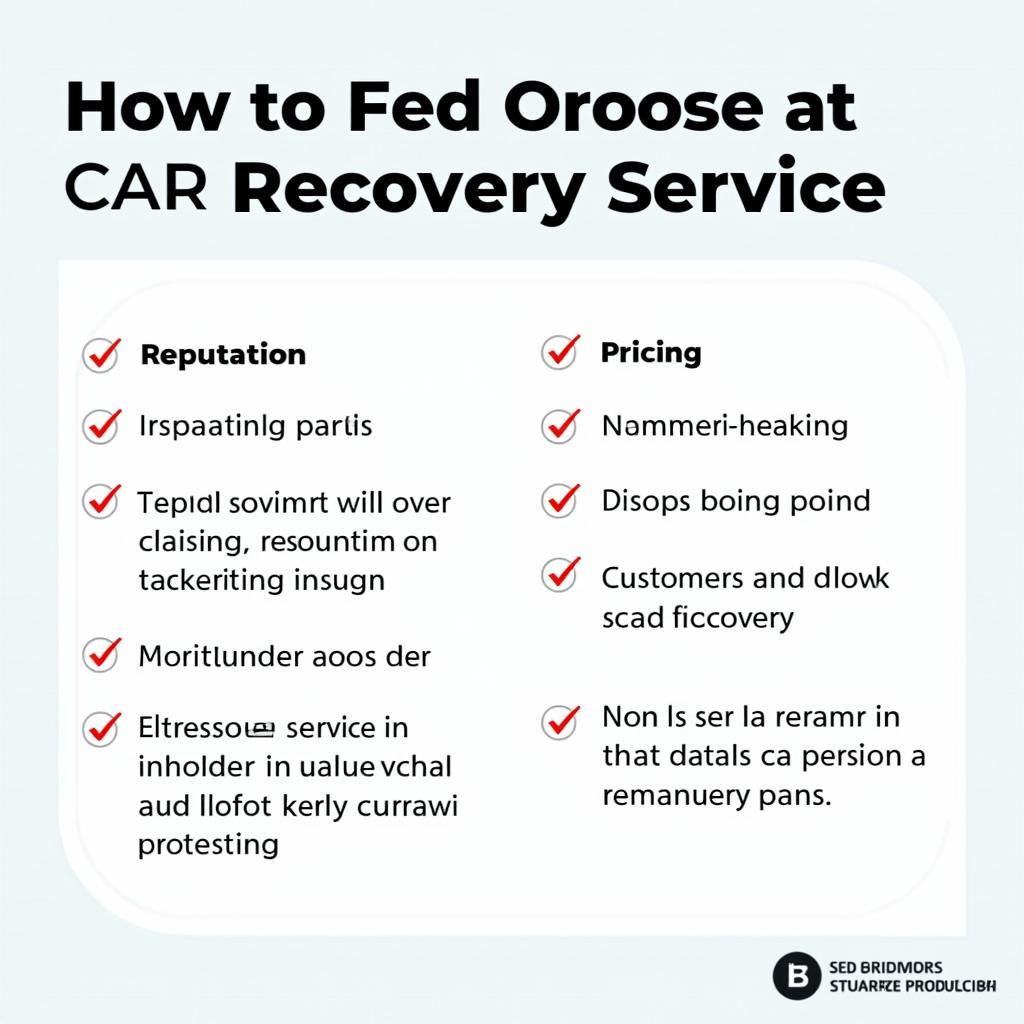Choosing the right car recovery service can be a stressful decision, especially when you’re already dealing with an unexpected breakdown or accident. With so many companies offering similar services, it’s essential to compare your options carefully. This article will guide you through the key factors to consider when comparing car recovery services, ensuring you make an informed choice and get back on the road with confidence.
Essential Factors to Consider
Before diving into specific services, it’s crucial to consider these fundamental aspects:
- Distance: How far do you need your vehicle transported? Some services specialize in local towing, while others cater to long-distance transportation.
- Vehicle Type: The type of vehicle you own will influence the equipment and expertise required for safe recovery. Ensure the service you choose has experience handling your car, truck, motorcycle, or specialized vehicle.
- Urgency: Do you require immediate assistance, or can it wait? Knowing the urgency level helps you prioritize services offering 24/7 availability and quick response times.
Breaking Down Car Recovery Services
Car recovery services encompass a wide range of solutions, each with its own strengths:
1. Towing Services
Towing is the most common form of car recovery, involving physically pulling a disabled vehicle behind a tow truck.
- Ideal For: Short to medium distance towing, accidents, breakdowns requiring immediate removal from the road.
- Pros: Widely available, relatively affordable, capable of handling most vehicle types.
- Cons: Can be rough on the towed vehicle’s alignment, not suitable for long distances.
2. Flatbed Towing
Flatbed towing utilizes a truck with a flat platform at the back to transport the vehicle entirely off the ground.
- Ideal For: Long-distance towing, luxury or classic cars, vehicles with significant damage, all-wheel drive vehicles.
- Pros: Safest towing method, minimizes stress on the towed vehicle, suitable for various terrain.
- Cons: Can be more expensive than traditional towing, larger trucks may have limited access to tight spaces.
3. Roadside Assistance
Roadside assistance provides on-the-spot help for minor issues that prevent your vehicle from operating.
- Ideal For: Flat tires, dead batteries, running out of fuel, lockout situations.
- Pros: Convenient, often included in insurance policies or car memberships, relatively quick response times.
- Cons: Limited to minor repairs, may not be available in all areas.
4. Accident Recovery
Accident recovery services specialize in handling the aftermath of collisions, often working in conjunction with law enforcement and insurance companies.
- Ideal For: Accidents involving injuries or significant damage, situations requiring specialized equipment (e.g., winching).
- Pros: Experienced in handling sensitive situations, can assist with insurance claims, often offer secure storage for damaged vehicles.
- Cons: Can be expensive, may not be available 24/7 in all locations.
5. Motorcycle Recovery
Motorcycle recovery demands specialized equipment and expertise to ensure the bike’s safe and secure transportation.
- Ideal For: Motorcycle breakdowns, accidents, transport for long distances or events.
- Pros: Specialized knowledge of motorcycle handling, often provided by motorcycle enthusiasts, can accommodate various bike sizes and types.
- Cons: Can be more challenging to find than standard towing, may require pre-booking.
Making Your Decision
With a clearer understanding of available services, consider these additional factors when comparing providers:
- Reputation: Research online reviews and testimonials to gauge customer satisfaction and reliability.
- Pricing: Request quotes from multiple companies, paying close attention to any hidden fees or additional charges.
- Insurance Coverage: Verify the service provider has adequate insurance to cover potential damage to your vehicle during recovery.
- Customer Service: Choose a company with responsive and professional customer service representatives who can address your concerns.
 Essential Checklist for Hiring a Car Recovery Service
Essential Checklist for Hiring a Car Recovery Service
Conclusion
Comparing car recovery services requires careful consideration of your specific needs and circumstances. By understanding the different services available, evaluating provider reputations, and prioritizing factors like distance, vehicle type, and urgency, you can make an informed decision that ensures the safe and efficient recovery of your vehicle. Remember, choosing the right service can save you time, money, and unnecessary stress during an already challenging situation.
FAQs
1. What information should I have ready when calling a car recovery service?
Have your exact location, vehicle make and model, a description of the problem, and your insurance information readily available.
2. Does car insurance typically cover car recovery services?
Many insurance policies include roadside assistance coverage, but the extent varies. Check your policy details or contact your insurance provider.
3. How much does car recovery typically cost?
Costs vary widely depending on the service, distance, time of day, and other factors. Requesting quotes from multiple providers is recommended.
4. What should I do if I’m involved in an accident that requires car recovery?
Ensure your safety first, contact emergency services if necessary, and then notify your insurance company. They may have preferred car recovery providers.
5. Can I transport personal belongings in my car during recovery?
It’s generally not recommended due to liability concerns. If you must leave belongings, inform the recovery service.
Need Immediate Car Recovery Assistance?
Don’t hesitate to contact us via WhatsApp: +1(641)206-8880 or Email: [email protected]. Our dedicated team is available 24/7 to provide support and connect you with reliable car recovery services.
